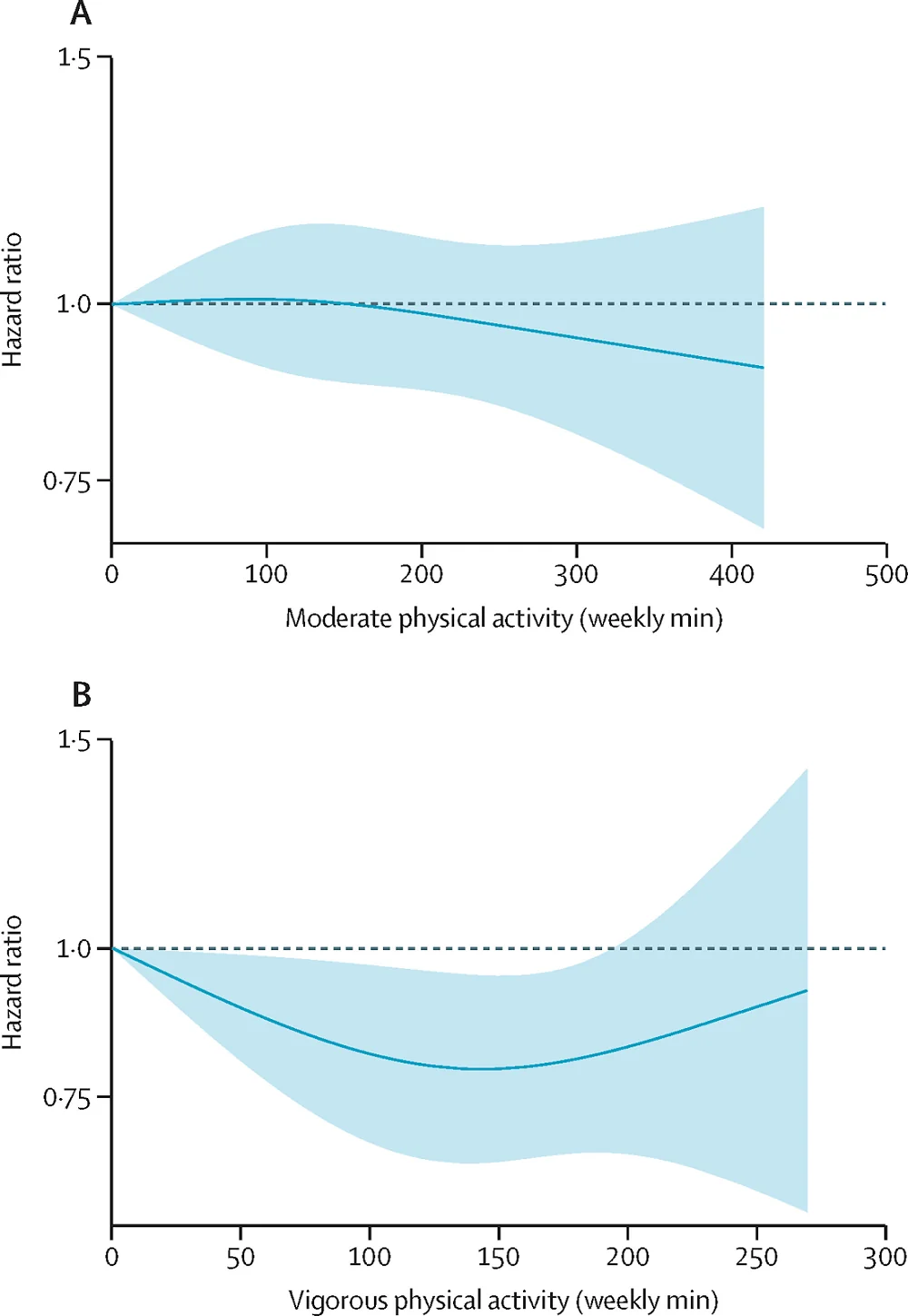According to a new study, the amount of leisure time spent on vigorous physical activity is inversely correlated with Alzheimer’s, but after a certain point, the association is reversed [1].
Outrunning dementia
Due to populational aging and medicine’s successes against other age-related diseases, Alzheimer’s disease has become one of the leading causes of mortality in the developed world. Yet, no effective treatment has been introduced, apart from a handful of drugs that are only able to moderately slow the disease progression in some patients. In lieu of such treatments, lifestyle changes, such as physical activity, remain the best course of action for people who want to reduce their chances of getting the disease with age [2].
Previous research has shown either no association or a moderate reverse association between physical activity and Alzheimer’s [3]. Since randomized controlled trials for the prevention of Alzheimer’s are hardly possible, we must rely on epidemiological studies, which are notoriously unreliable and only able to show correlation rather than causation. However, by doing more of those studies, scientists can gauge the overall trend, which has been done in a new study published in the Lancet Healthy Longevity journal.
Better something than nothing, but not too much
The study analyzed 22 consecutive waves of the US National Health Interview Survey from 1997 to 2018, which, in total, recruited almost 100,000 participants aged 68 years or older. The median follow-up period was 6.5 years. The researchers claim this to be the first Alzheimer’s study to stratify physical activity by intensity while also estimating the number of preventable deaths.
After controlling for several confounding variables, such as smoking, alcohol consumption, chronic conditions, functional limitations, body-mass index, strength training, and educational attainment, the researchers found a non-significant negative relationship between Alzheimer’s incidence and the amount of moderate physical activity. More interestingly, a significant U-shaped association between Alzheimer’s and vigorous physical activity emerged.

The largest decrease in the risk of Alzheimer’s (21%) was associated with 140 minutes of vigorous exercise per week. After that point, the hazard ratio gradually climbed back up. The researchers also identified the “minimal” relevant amount of vigorous physical activity, which was associated with a risk reduction of 50% from the optimal amount, and it was 40 minutes per week.
These results might look surprising, but they are not unheard of. A growing amount of research shows it is possible to be getting too much exercise [4]. Specifically for Alzheimer’s, a study based on the huge UK Biobank observed a similar L-shaped association between objectively measured moderate-to-vigorous physical activity and incident dementia [5].
31,000 lives theoretically saved
The researchers also estimated how many lives lost to Alzheimer’s in the US might be saved by physical activity. In a theoretical scenario, in which all elderly Americans engage in the optimal amount of vigorous exercise versus none of them doing any, the number of prevented deaths was approximately 31,000. Notably, this scenario is not entirely unrealistic since only 20% of the respondents in the study reported getting any vigorous exercise at all. Maintaining the minimal amount of vigorous physical activity would result in a 10% reduction in Alzheimer’s-related deaths.
This study has its share of limitations, starting with relying on self-reported amounts of physical activity, which are prone to recollection bias. In the future, we can expect more studies based on physical activity levels objectively measured by wearable devices. Residual confounding and reverse causation are often inevitable in populational studies, although the researchers tried to minimize them. Despite those limitations, this study adds to our growing understanding that, first, some vigorous physical activity is much better than none at all, and second, exercise zeal can be taken too far.
To our knowledge, this study is the first to examine the dose–response associations of leisure time MPA and VPA with Alzheimer’s disease-related mortality. The study also provides new estimates of the potential number of Alzheimer’s disease-related deaths that could be averted through physical activity in the USA. Our results show that 20–190 weekly min of VPA are associated with a reduced risk of Alzheimer’s disease-related mortality. We found a minimal dose of 40 weekly min of VPA and an optimal dose of 140 weekly min of VPA for reducing the risk of Alzheimer’s disease-related mortality, potentially preventing 10% and 31% of annual Alzheimer’s disease-related deaths in the USA, respectively.
Literature
[1] López-Bueno, R., Yang, L., Stamatakis, E., & del Pozo Cruz, B. (2023). Moderate and vigorous leisure time physical activity in older adults and Alzheimer’s disease-related mortality in the USA: a dose–response, population-based study. The Lancet Healthy Longevity, 4(12), e703-e710.
[2] Flicker, L. (2010). Modifiable lifestyle risk factors for Alzheimer’s disease. Journal of Alzheimer’s disease, 20(3), 803-811.
[3] Yoon, M., Yang, P. S., Jin, M. N., Yu, H. T., Kim, T. H., Jang, E., … & Joung, B. (2021). Association of physical activity level with risk of dementia in a nationwide cohort in Korea. JAMA network open, 4(12), e2138526-e2138526.
[4] Schnohr, P., O’Keefe, J. H., Lavie, C. J., Holtermann, A., Lange, P., Jensen, G. B., & Marott, J. L. (2021, December). U-shaped association between duration of sports activities and mortality: Copenhagen City Heart Study. In Mayo Clinic Proceedings (Vol. 96, No. 12, pp. 3012-3020). Elsevier.
[5] Petermann-Rocha, F., Lyall, D. M., Gray, S. R., Gill, J. M., Sattar, N., Welsh, P., … & Celis-Morales, C. (2021). Dose-response association between device-measured physical activity and incident dementia: a prospective study from UK Biobank. BMC medicine, 19, 1-13.







